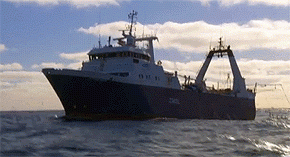
Content supplied by MPI
The Ministry for Primary Industries (MPI) has now released its 2013 summaries of the Status of New Zealand’s Fisheries which confirms most New Zealand fisheries are performing well.
Highlights from the 2013 review show that:
Both stocks of hoki have now increased for seven consecutive years and both are now well within or above their management targets. As a result it has been possible to increase the quota from 90,000 tonnes to 150,000 metric tonnes
The recent discovery of a new aggregation of Chatham Rise orange roughy has led to a favourable revision of the status of this stock
The Campbell Island Rise stock of southern blue whiting remains at an historic high
A new assessment of blue cod in the southern South Island indicates that the stock is performing well
A number of South Island stocks of gurnard, john dory and elephantfish have increased significantly.
James Stevenson-Wallace, Director Fisheries Management, MPI says the Ministry is committed to sustainable fisheries and that fish are a valuable resource in a number of different ways.
He says New Zealand continues to be world-leading in the sustainable management of fishing, and the QMS gives fisheries managers the ability to address problems when they occur.
MPI is continuing to improve its comprehensive fisheries management regime designed to provide sustainable fisheries now and into the future. This regime is based on international best practice and is contained in the Harvest Strategy Standard.
The Standard sets fishery and stock targets and limits for fish stocks in New Zealand’s Quota Management System (QMS). There are currently 638 stocks in the QMS. Of these, 350 stocks are considered to have significant commercial or non-commercial potential.
Their status is determined relative to four biological reference points – a ‘soft limit’, a ‘hard limit’, an ‘overfishing threshold’, and a ‘management target’.
The soft limit is the lower bound on the desirable population size; the hard limit is a population size below which fisheries closures may need to be considered; the overfishing threshold is the maximum percentage of the population that can be removed each year; and the management target is the population size that well-managed fish populations are expected to fluctuate around.
Dr Pamela Mace, Principal Advisor Fisheries Science, reports that in terms of stocks of known status, 82.0% were above the soft limit, 93.5% were above the hard limit, 82.1% were below the overfishing threshold, and 69.2% were above their management targets.
When considering the tonnage of landings (of known status), 96.2% of the landings was composed of stocks above the soft limit, 99.5% of the landings were above the hard limit, 95.5% were below the overfishing threshold, and 92.8% were above the management target.
Twenty five stocks are considered to be below the soft limit.
In all such cases, corrective management action has been, or is being, put into place to rebuild the stocks.
In 2013, overfishing was documented for 17.9% of stocks, down from 25% four years ago.
To see the full report see the Status of Stocks page at http://fs.fish.govt.nz/Page.aspx?pk=16. To see the evaluations for each fish stock, see http://fs.fish.govt.nz/Page.aspx?pk=16&tk=478
We welcome your comments below. If you are not already registered, please register to comment
Remember we welcome robust, respectful and insightful debate. We don't welcome abusive or defamatory comments and will de-register those repeatedly making such comments. Our current comment policy is here.